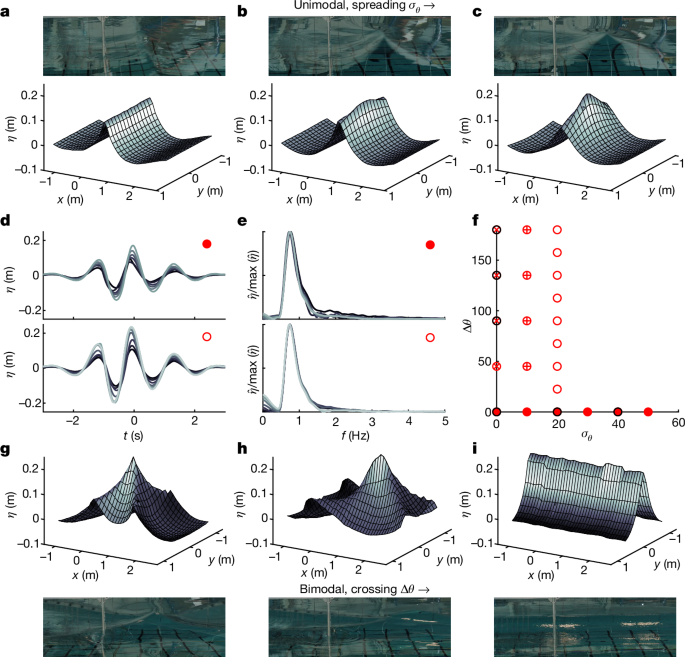2024-09-23 エディンバラ大学
<関連情報>
- https://www.ed.ac.uk/news/2024/ocean-waves-soar-beyond-known-limits-study-finds
- https://www.nature.com/articles/s41586-024-07886-z
3次元の砕波 Three-dimensional wave breaking
M. L. McAllister,S. Draycott,R. Calvert,T. Davey,F. Dias & T. S. van den Bremer
Nature Published:18 September 2024
DOI:https://doi.org/10.1038/s41586-024-07886-z

Abstract
Although a ubiquitous natural phenomenon, the onset and subsequent process of surface wave breaking are not fully understood. Breaking affects how steep waves become and drives air–sea exchanges1. Most seminal and state-of-the-art research on breaking is underpinned by the assumption of two-dimensionality, although ocean waves are three dimensional. We present experimental results that assess how three-dimensionality affects breaking, without putting limits on the direction of travel of the waves. We show that the breaking-onset steepness of the most directionally spread case is double that of its unidirectional counterpart. We identify three breaking regimes. As directional spreading increases, horizontally overturning ‘travelling-wave breaking’ (I), which forms the basis of two-dimensional breaking, is replaced by vertically jetting ‘standing-wave breaking’ (II). In between, ‘travelling-standing-wave breaking’ (III) is characterized by the formation of vertical jets along a fast-moving crest. The mechanisms in each regime determine how breaking limits steepness and affects subsequent air–sea exchanges. Unlike in two dimensions, three-dimensional wave-breaking onset does not limit how steep waves may become, and we produce directionally spread waves 80% steeper than at breaking onset and four times steeper than equivalent two-dimensional waves at their breaking onset. Our observations challenge the validity of state-of-the-art methods used to calculate energy dissipation and to design offshore structures in highly directionally spread seas.


